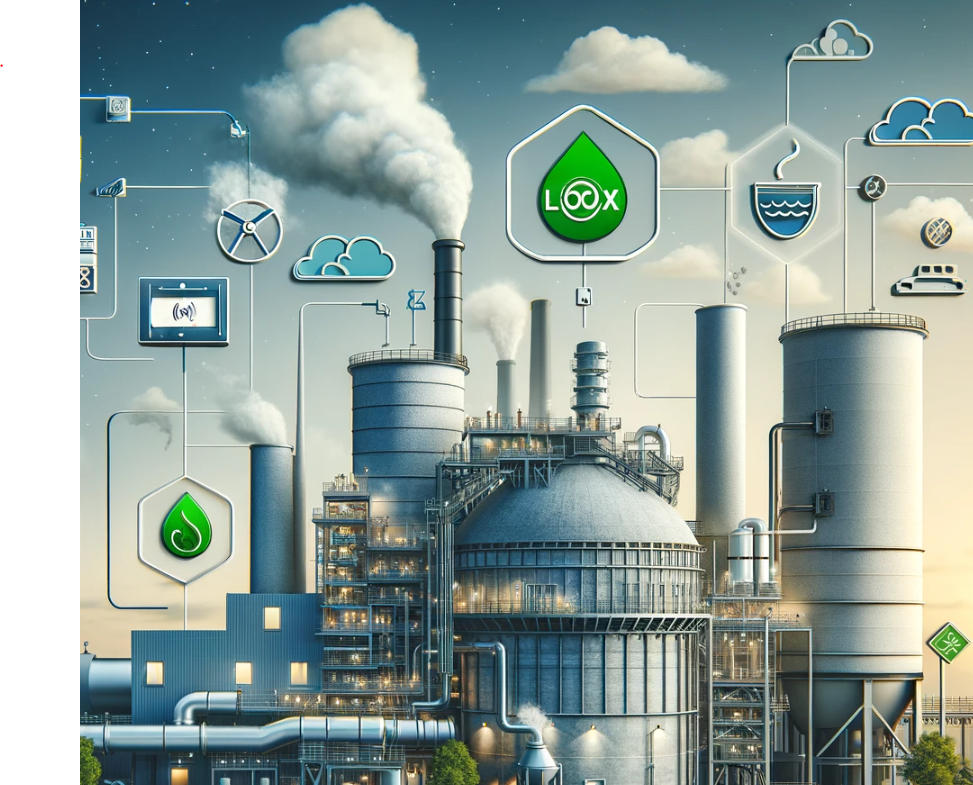Contents
Low NOx Cement Kiln Design: Engineering Solutions for Emission Compliance

TO Download this post and all the books and excel sheets and my personal notes and presentations I collected about cement industry in the last 30 years click the below paypal link
Introduction
As environmental regulations become increasingly stringent, the cement industry is under pressure to reduce its nitrogen oxide (NOx) emissions. NOx is a significant pollutant, contributing to smog, acid rain, and respiratory problems. Cement kilns, due to their high-temperature operations, are a major source of NOx emissions. To meet regulatory standards and reduce environmental impact, low NOx cement kiln designs have emerged as a critical area of focus. This article explores the engineering behind low NOx kiln designs, their benefits, and their role in ensuring compliance with environmental regulations.
Understanding NOx Emissions in Cement Kilns
Nitrogen oxides (NOx) are formed during the combustion process in cement kilns when nitrogen in the air reacts with oxygen at high temperatures. There are two primary types of NOx emissions in cement kilns:
- Thermal NOx: Formed at high temperatures when nitrogen and oxygen in the combustion air combine.
- Fuel NOx: Formed when nitrogen compounds in the fuel are oxidized.
Both types of NOx emissions can be reduced through advanced kiln design and operation techniques.
The Need for Low NOx Cement Kiln Designs
The drive towards low NOx cement kiln designs is primarily driven by environmental regulations, such as those set by the European Union’s Industrial Emissions Directive (IED) and the U.S. Environmental Protection Agency (EPA). These regulations set strict limits on NOx emissions, compelling cement manufacturers to adopt technologies and practices that minimize their environmental footprint.
Key Engineering Solutions for Low NOx Cement Kiln Designs
- Staged Combustion
- Description: Staged combustion involves controlling the fuel and air mixture in different stages to reduce peak flame temperatures, thereby limiting the formation of thermal NOx.
- Benefits: Significant reduction in NOx emissions without compromising the efficiency of the kiln.
- Selective Non-Catalytic Reduction (SNCR)
- Description: SNCR involves injecting ammonia or urea into the kiln to react with NOx, forming harmless nitrogen and water vapor.
- Benefits: Effective at reducing NOx emissions by up to 70%, depending on the specific kiln design and operating conditions.
- Low NOx Burners
- Description: These burners are designed to optimize the air-fuel mixture and flame shape, reducing the formation of thermal NOx.
- Benefits: Achieves substantial NOx reductions while maintaining high combustion efficiency.
- Exhaust Gas Recirculation (EGR)
- Description: EGR recirculates a portion of the kiln’s exhaust gas back into the combustion zone, lowering flame temperatures and reducing NOx formation.
- Benefits: Provides significant NOx reduction, particularly in kilns with high fuel nitrogen content.
- Precalciner Technology
- Description: The use of a precalciner allows for partial calcination of raw materials before they enter the kiln, reducing the required kiln temperature and, consequently, NOx emissions.
- Benefits: Improves energy efficiency and reduces NOx emissions by lowering peak combustion temperatures.
Benefits of Low NOx Cement Kiln Designs
- Regulatory Compliance
- Low NOx kiln designs ensure that cement plants meet stringent environmental regulations, avoiding fines and operational disruptions.
- Improved Environmental Impact
- Reducing NOx emissions contributes to cleaner air and a healthier environment, enhancing the cement industry’s sustainability credentials.
- Operational Efficiency
- Advanced kiln designs often come with improved energy efficiency, reducing fuel consumption and operating costs.
- Enhanced Reputation
- Companies that invest in low NOx technologies can position themselves as industry leaders in environmental responsibility, enhancing their brand and market appeal.
Case Studies: Successful Implementation of Low NOx Kiln Designs
- Case Study 1: LafargeHolcim’s Low NOx Initiative
- LafargeHolcim implemented SNCR technology across several of its cement plants, achieving NOx reductions of up to 60%. This investment helped the company meet EU emission standards while improving operational efficiency.
- Case Study 2: HeidelbergCement’s Staged Combustion Strategy
- HeidelbergCement adopted staged combustion in its German plants, resulting in NOx emissions well below the legal limits. This strategy not only ensured compliance but also led to a reduction in fuel consumption.
Future Trends in Low NOx Cement Kiln Design
As regulations become more stringent and the demand for sustainable cement production grows, the development of low NOx kiln designs will continue to evolve. Future trends may include:
- Integration of AI and Machine Learning: Optimizing kiln operation in real-time to minimize NOx emissions.
- Advanced Burner Designs: Developing burners that further reduce NOx formation while maximizing fuel efficiency.
- Hybrid Technologies: Combining multiple NOx reduction strategies to achieve even lower emission levels.
Conclusion
Low NOx cement kiln designs are essential for meeting today’s stringent environmental regulations and reducing the cement industry’s impact on air quality. By adopting advanced engineering solutions such as staged combustion, SNCR, and low NOx burners, cement manufacturers can significantly reduce their NOx emissions, ensuring compliance and contributing to a cleaner environment. As technology continues to advance, the future of low NOx kiln design holds the promise of even greater efficiency and sustainability.
References
- European Commission – Industrial Emissions Directive (IED)
- U.S. Environmental Protection Agency – NOx Emissions
- LafargeHolcim – NOx Reduction Initiatives
- HeidelbergCement – Emission Reduction Strategies
- Cemtech – Advances in Low NOx Kiln Technology
- Global Cement – NOx Control in the Cement Industry
- World Cement – Innovations in Low NOx Burners
- International Cement Review – Precalciner Technology and NOx Reduction
- IEEE Xplore – Exhaust Gas Recirculation in Cement Kilns
- SpringerLink – Environmental Impact of Cement Production
By focusing on the critical need for NOx reduction in cement kilns and providing actionable insights, this article aims to rank as the top resource for professionals seeking to implement low NOx kiln designs.
TO Download this post and all the books and excel sheets and my personal notes and presentations I collected about cement industry in the last 30 years click the below paypal link
